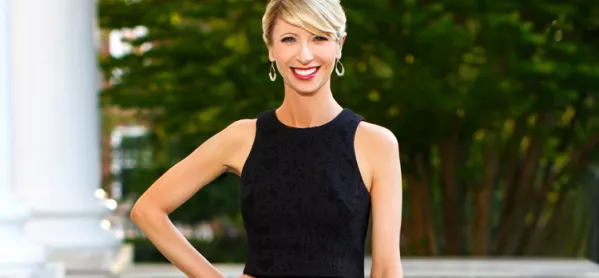For those teachers who plan their classroom speeches to the syllable, Amy Cuddy has some disappointing news.
“Some researchers did a study looking at a rating students gave a professor at the end of the semester, and then showing students who did not take that class short clips of the professor with no sound, and had them rate the professor, too.
“The ratings from those who did not take the class correlate very strongly with the ratings of those students who took a full semester of classes. The non-verbal - their body language - was as important [to perception] as what was being said.”
Strike a pose
Cuddy says there are plenty of body language “facts” that misinterpret research and plenty of relatively obscure findings about how we can use body language that would benefit teachers. Indeed, she argues that body language is extremely important for the profession.
“In teaching, which is so reliant on relationships, not being aware of your body language, or the body language of your students, is potentially very damaging,” she says.
In terms of basic principles, she advises: “Body language needs to be open, confident but not domineering. You want to be interested and show interest, so do not lean away from people, crossing your arms in a stern way - doing that gets you nowhere.”
State of mind
But she says that body language should come from your state of mind, not from a concerted effort to “pose” in a particular way.
“I am not saying that you should deliberately use certain body language, because then it becomes scripted and unnatural,” she adds. “But if you have the right frame of mind, then the body language you need will come naturally. If you catch yourself not doing the above, then that’s probably a state of mind issue.”
Cuddy warns that the biggest mistakes can be made in situations where teachers typically adopt “strong” body language - mostly when disciplining a child.
“When someone looks at you in this situation, they are signalling they want to fight. By looking away, the student is conceding. So why, as a teacher, would you then say, ‘Look at me when I am talking to you’? It’s completely the wrong approach.”
It seems that while many teachers are keenly aware of the power of a strategic folding of arms or a well-timed hands-to-the-hips moment, clearly there is a lot more to how body language is used in the classroom than most of us realise. As Cuddy says, it’s something that we all have to get better at, no matter our profession.
Amy Cuddy is the associate professor of business administration at the Harvard Business School. Her TED lecture on body language can be found here.
This is an edited version of a feature in the 23 September issue of TES. Subscribers can read the full story here. To subscribe, click here. To download the digital edition, Android users can click here and iOS users can click here. The magazine is also available in all good newsagents.
Want to keep up with the latest education news and opinion? Follow TES on Twitter and like TES on Facebook
